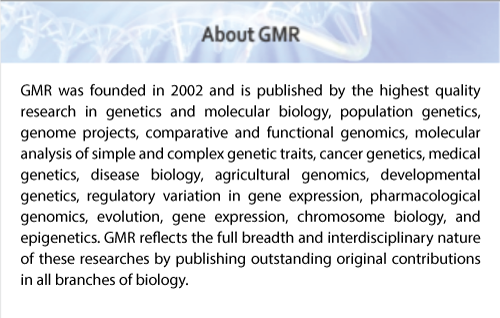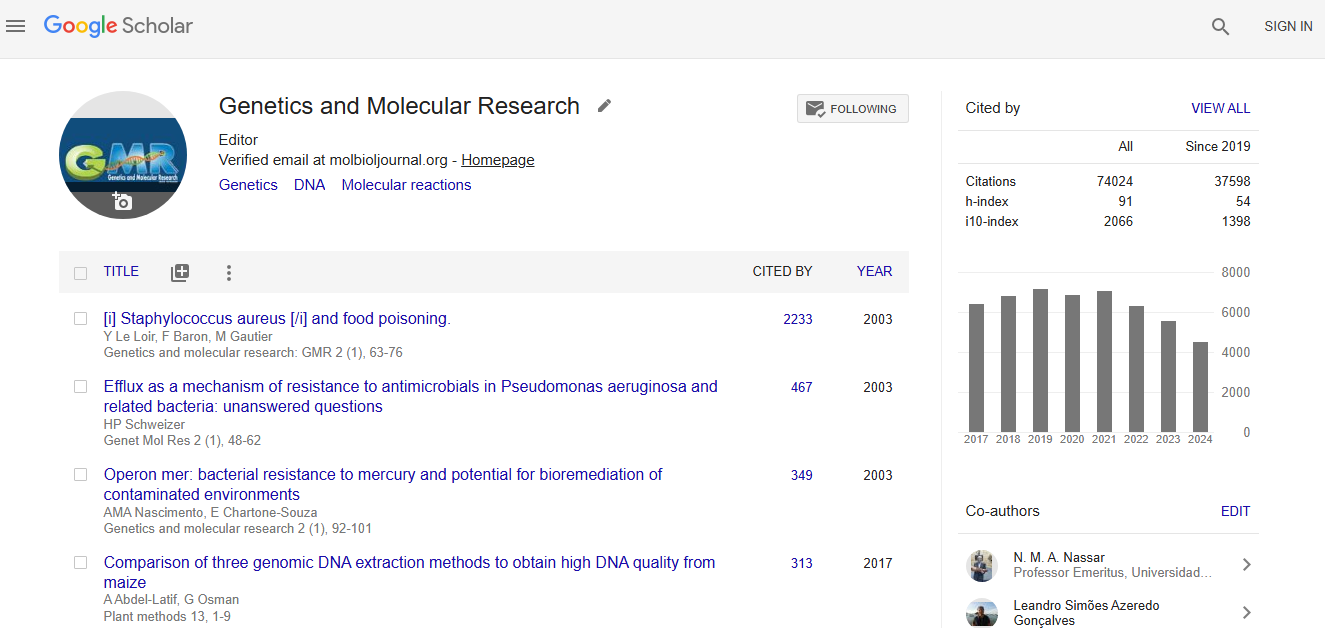Abstract
Genetic diversity analysis of faba bean (Vicia faba L.) germplasms using sodium dodecyl sulfate-polyacrylamide gel electrophoresis
Author(s): W.W. Hou1*, X.J. Zhang2*, J.B. Shi1 and Y.J. Liu1To investigate genetic diversity and relationships of 101 faba bean (Vicia faba L.), landraces and varieties from different provinces of China and abroad were analyzed by sodium dodecyl sulfate (SDS)-polyacrylamide gel electrophoresis (PAGE). A total of 2625 unambiguous and stable bands from 101 germplasms were detected, and 36 different bands were classified according to the electrophoretic mobility patterns of the proteins as determined by the SDS-PAGE analysis, of which 16 were polymorphic. Besides the common bands, the protein bands of 92, 75, 62, 40, 34, 17, and 13 kDa presented the highest frequencies of 92.08, 90.10, 99.01, 95.05, 95.05, 98.02, and 95.05%, respectively. The other 29 polymorphic protein bands showed higher polymorphism with 16.09 polymorphic bands in average. The genetic similarity of the 101 genotypes tested varied from 0.6111 to 0.9722, with an average of 0.7122. Cluster analysis divided the 101 genotypes into six major clusters, which was consistent with the systematic classification of faba bean done in previous studies. The overall results indicated that SDS-PAGE was a useful tool for genetic diversity analysis and laid a solid foundation for future faba bean breeding. To investigate genetic diversity and relationships of 101 faba bean (Vicia faba L.), landraces and varieties from different provinces of China and abroad were analyzed by sodium dodecyl sulfate (SDS)-polyacrylamide gel electrophoresis (PAGE). A total of 2625 unambiguous and stable bands from 101 germplasms were detected, and 36 different bands were classified according to the electrophoretic mobility patterns of the proteins as determined by the SDS-PAGE analysis, of which 16 were polymorphic. Besides the common bands, the protein bands of 92, 75, 62, 40, 34, 17, and 13 kDa presented the highest frequencies of 92.08, 90.10, 99.01, 95.05, 95.05, 98.02, and 95.05%, respectively. The other 29 polymorphic protein bands showed higher polymorphism with 16.09 polymorphic bands in average. The genetic similarity of the 101 genotypes tested varied from 0.6111 to 0.9722, with an average of 0.7122. Cluster analysis divided the 101 genotypes into six major clusters, which was consistent with the systematic classification of faba bean done in previous studies. The overall results indicated that SDS-PAGE was a useful tool for genetic diversity analysis and laid a solid foundation for future faba bean breeding.
Impact Factor an Index

Google scholar citation report
Citations : 74024
Genetics and Molecular Research received 74024 citations as per google scholar report
